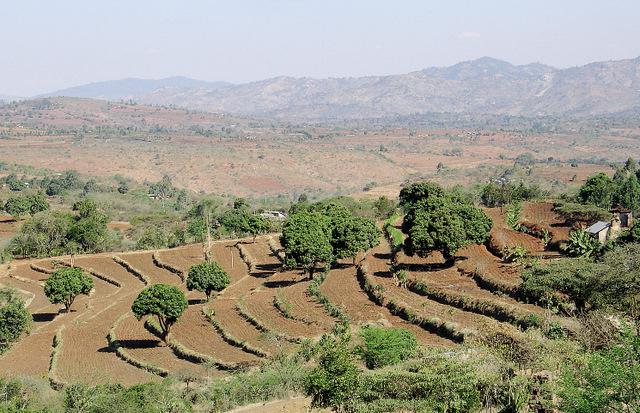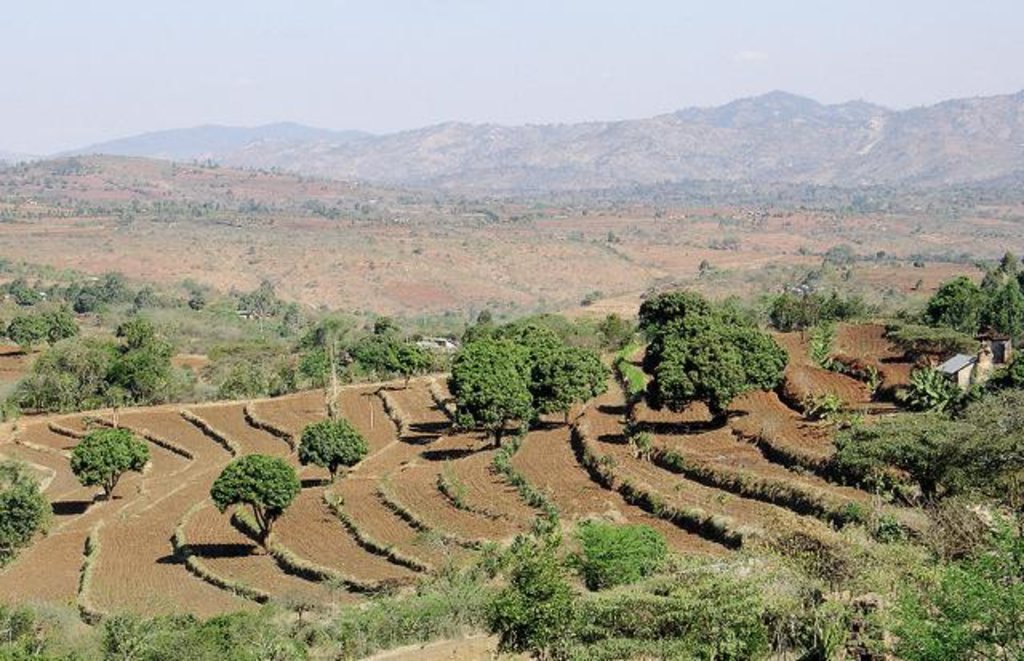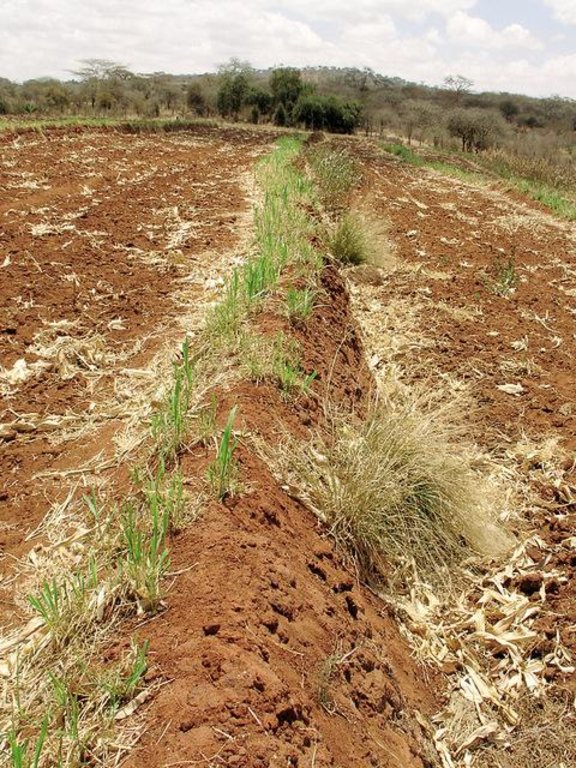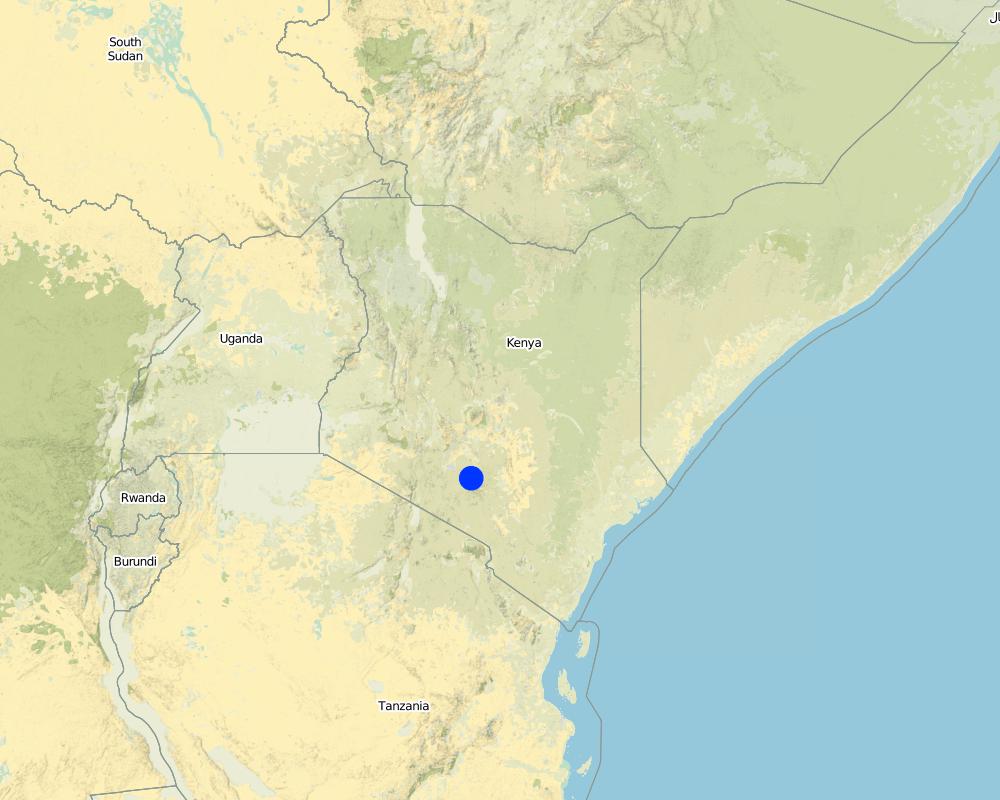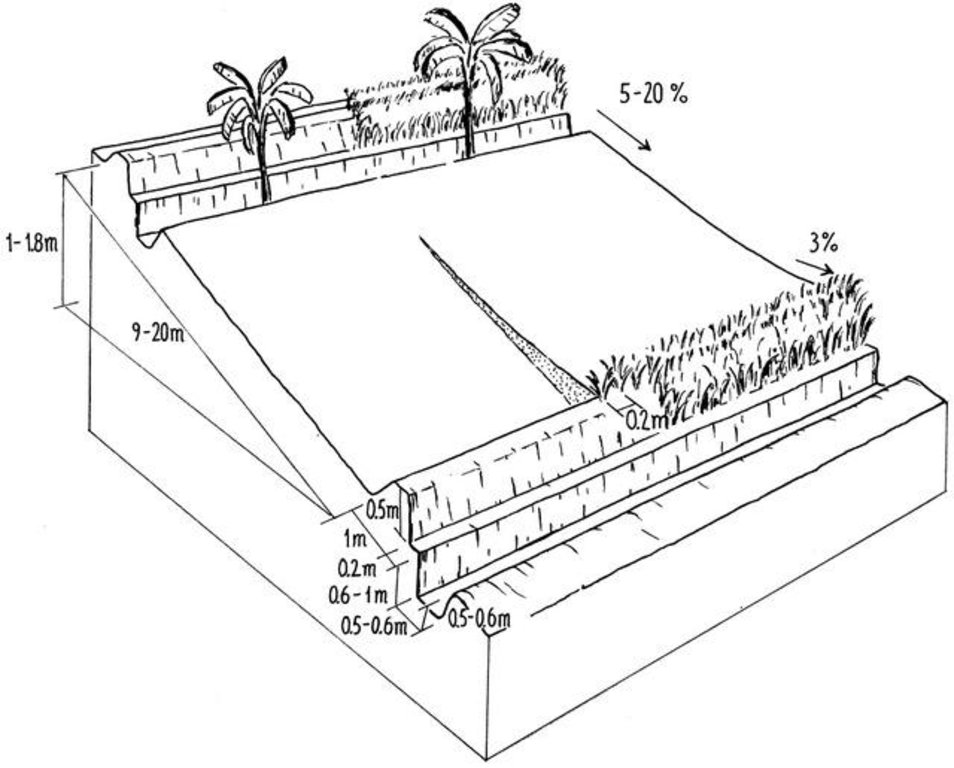Fanya juu terraces [Kenya]
- Creation:
- Update:
- Compiler: Kithinji Mutunga
- Editor: –
- Reviewers: David Streiff, Deborah Niggli, Alexandra Gavilano
Fanya Juu
technologies_1336 - Kenya
View sections
Expand all Collapse all1. General information
1.2 Contact details of resource persons and institutions involved in the assessment and documentation of the Technology
State employee:
SLM specialist:
State employee:
Mburu Joseph
Ministry of Agriculture
Kenya
SLM specialist:
State employee:
Name of project which facilitated the documentation/ evaluation of the Technology (if relevant)
Book project: where the land is greener - Case Studies and Analysis of Soil and Water Conservation Initiatives Worldwide (where the land is greener)Name of project which facilitated the documentation/ evaluation of the Technology (if relevant)
Book project: Water Harvesting – Guidelines to Good Practice (Water Harvesting)Name of project which facilitated the documentation/ evaluation of the Technology (if relevant)
Book project: SLM in Practice - Guidelines and Best Practices for Sub-Saharan Africa (SLM in Practice)Name of the institution(s) which facilitated the documentation/ evaluation of the Technology (if relevant)
Ministry of Agriculture and Livestock Development of Kenya (MoA) - KenyaName of the institution(s) which facilitated the documentation/ evaluation of the Technology (if relevant)
CDE Centre for Development and Environment (CDE Centre for Development and Environment) - SwitzerlandName of the institution(s) which facilitated the documentation/ evaluation of the Technology (if relevant)
Food and Agriculture Organization of the United Nations (FAO) - Italy1.3 Conditions regarding the use of data documented through WOCAT
The compiler and key resource person(s) accept the conditions regarding the use of data documented through WOCAT:
Yes
1.5 Reference to Questionnaire(s) on SLM Approaches (documented using WOCAT)
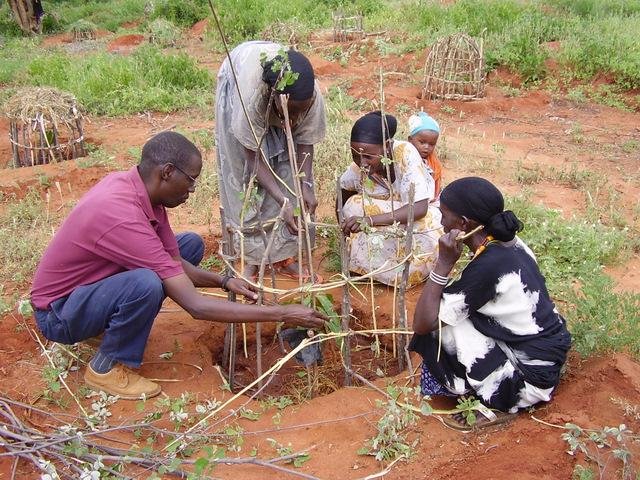
Catchment Approach [Kenya]
A focused approach to integrated land and water management, including soil and water conservation, where the active participation of the villagers - often organised through common interest groups - is central.
- Compiler: James Gatero Njuki
2. Description of the SLM Technology
2.1 Short description of the Technology
Definition of the Technology:
Terrace bund in association with a ditch, along the contour or on a gentle lateral gradient. Soil is thrown on the upper side of the ditch to form the bund, which is often stabilised by planting a fodder grass.
2.2 Detailed description of the Technology
Description:
Fanya juu (‘throw it upwards’ in Kiswahili) terraces comprise embankments (bunds), which are constructed by digging ditches and heaping the soil on the upper sides to form the bunds. A small ledge or ‘berm’ is left between the ditch and the bund to prevent soil sliding back. In semi-arid areas, fanya juu terraces are normally constructed on the contour to hold rainfall where it falls, whereas in subhumid zones they are laterally graded to discharge excess runoff. Spacing is according to slope and soil depth (see technical drawing ). For example, on a 15% slope with a moderately deep soil, the spacing is 12 m between structures and the vertical interval around 1.7 m. The typical dimensions for the ditches are 0.6 m deep and 0.6 m wide. The bund has a height of 0.4 m and a base width of 0.5-1 m. Construction by hand takes around 90 days per hectare on a typical 15% slope, though labour rates increase considerably on steeper hillsides because of closer spacing of structures.
The purpose of the fanya juu is to prevent loss of soil and water, and thereby to improve conditions for plant growth. The bund created is usually stabilised with strips of grass, often napier (Pennisetum purpureum), or makarikari (Panicum coloratum var. makarikariensis) in the drier zones. These grasses serve a further purpose, namely as fodder for livestock. As a supportive and supplementary agroforestry measure, fruit or multipurpose trees may be planted immediately above the embankment (eg citrus or Grevillea robusta), or in the ditch below in drier areas (eg bananas or pawpaws), where runoff tends to concentrate.
As a consequence of water and tillage erosion, sediment accumulates behind the bund, and in this way fanya juu terraces may eventually develop into slightly forward-sloping (or even level) bench terraces. Maintenance is important: the bunds need annual building-up from below, and the grass strips require trimming to keep them dense. Fanya juu terraces are associated with hand construction, and are well suited to small-scale farms where they have been used extensively in Kenya. They first came into prominence in the 1950s, but the period of rapid spread occurred during the 1970s and 1980s with the advent of the National Soil and Water Conservation Programme. Fanya juu terraces are spreading throughout Eastern African, and further afield also.
2.3 Photos of the Technology
2.5 Country/ region/ locations where the Technology has been applied and which are covered by this assessment
Country:
Kenya
Region/ State/ Province:
Eastern Province
Further specification of location:
Eastern Province
Specify the spread of the Technology:
- evenly spread over an area
If the Technology is evenly spread over an area, specify area covered (in km2):
3000.0
If precise area is not known, indicate approximate area covered:
- 1,000-10,000 km2
Comments:
Total area covered by the SLM Technology is 3000 km2.
Map
×2.6 Date of implementation
If precise year is not known, indicate approximate date:
- more than 50 years ago (traditional)
2.7 Introduction of the Technology
Specify how the Technology was introduced:
- as part of a traditional system (> 50 years)
Comments (type of project, etc.):
Fanya juu terracing started around 1937 in Machakos District and was adopted widely from 1950s.
3. Classification of the SLM Technology
3.1 Main purpose(s) of the Technology
- reduce, prevent, restore land degradation
3.2 Current land use type(s) where the Technology is applied
Land use mixed within the same land unit:
No

Cropland
- Annual cropping
- Tree and shrub cropping
Annual cropping - Specify crops:
- cereals - maize
- fodder crops - grasses
- legumes and pulses - peas
Tree and shrub cropping - Specify crops:
- citrus
Number of growing seasons per year:
- 2
Specify:
Longest growing period in days: 180Longest growing period from month to month: Mar - AugSecond longest growing period in days: 150Second longest growing period from month to month: Oct - Feb
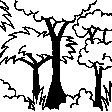
Forest/ woodlands
- Tree plantation, afforestation
Type of tree:
- Grevillea robusta
Comments:
Trees/ shrubs species: eg citrus, Grevillea robusta
Grass species: Napier, Makarikari
Major land use problems (compiler’s opinion): Low and erratic rainfall, soil erosion, surface sealing, water loss through runoff, low soil fertility as well as shortage of land and thus a need to conserve resources.
Major land use problems (land users’ perception): Low and erratic rainfall. Soil erosion. Soil sealing. Water losses through runoff. Low fertility and land shortage.
3.4 Water supply
Water supply for the land on which the Technology is applied:
- rainfed
3.5 SLM group to which the Technology belongs
- cross-slope measure
3.6 SLM measures comprising the Technology

vegetative measures
- V2: Grasses and perennial herbaceous plants
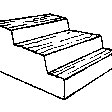
structural measures
- S1: Terraces
Comments:
Main measures: structural measures
Secondary measures: vegetative measures
3.7 Main types of land degradation addressed by the Technology

soil erosion by water
- Wt: loss of topsoil/ surface erosion
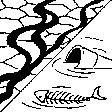
water degradation
- Ha: aridification
Comments:
Main type of degradation addressed: Wt: loss of topsoil / surface erosion, Ha: aridification
Main causes of degradation: over-exploitation of vegetation for domestic use, other human induced causes (specify) (Agricultural causes), poverty / wealth (Lack of captial)
Secondary causes of degradation: deforestation / removal of natural vegetation (incl. forest fires), overgrazing, other natural causes (avalanches, volcanic eruptions, mud flows, highly susceptible natural resources, extreme topography, etc.) specify, land tenure (Land subdivision), labour availability (Lack of labour), education, access to knowledge and support services (Lack of knowledge), Lack of enforcement of legislat./authority
3.8 Prevention, reduction, or restoration of land degradation
Specify the goal of the Technology with regard to land degradation:
- reduce land degradation
4. Technical specifications, implementation activities, inputs, and costs
4.1 Technical drawing of the Technology
Technical specifications (related to technical drawing):
Technical drawing: Fanja juu terraces: newly constructed (left) and mature (right) with bananas planted below the bund and fodder grass on the riser: note leveling occurs over time (right).
Technical knowledge required for field staff / advisors: moderate
Technical knowledge required for land users: low
Main technical functions: control of dispersed runoff: retain / trap, reduction of slope angle, reduction of slope length, increase of infiltration, increase / maintain water stored in soil
Vegetative measure: aligned trees
Vegetative material: T : trees / shrubs
Vegetative measure: grass strips
Vegetative material: T : trees / shrubs
Vegetative measure: Vegetative material: T : trees / shrubs
Vegetative measure: Vegetative material: T : trees / shrubs
Trees/ shrubs species: eg citrus, Grevillea robusta
Grass species: Napier, Makarikari
Slope (which determines the spacing indicated above): 12.00%
If the original slope has changed as a result of the Technology, the slope today is (see figure below): 3.00%
Structural measure: bunds
Vertical interval between structures (m): 1.7
Spacing between structures (m): 12
Depth of ditches/pits/dams (m): 0.6
Width of ditches/pits/dams (m): 0.6
Height of bunds/banks/others (m): 0.4
Width of bunds/banks/others (m): 0.5-1
Construction material (earth): thrown uphill to build bund
Slope (which determines the spacing indicated above): 15%
If the original slope has changed as a result of the Technology, the slope today is: 3%
Vegetation is used for stabilisation of structures.
Author:
Mats Gurtner
4.2 General information regarding the calculation of inputs and costs
other/ national currency (specify):
Kenya Shilling
Indicate average wage cost of hired labour per day:
3.00
4.3 Establishment activities
| Activity | Timing (season) | |
|---|---|---|
| 1. | Digging planting holes for grass. | beginning of rainy season |
| 2. | Layout (alignment and spacing) of terraces either on the contour | dry season |
| 3. | Fumer et planter l’herbe | début de la saison des pluies |
| 4. | Planifier (alignement et espacement) des terrasses : (a) selon les courbes de niveau en zone sèche ; (b) avec une légère pente en zone plus humide, en utilisant des « niveaux à corde » | saison sèche |
| 5. | Ameublir la terre pour l’extraction (pioche à dents, charrue à bœufs) | saison sèche |
| 6. | Creuser une tranchée et jeter la terre en amont pour former une butte, en laissant une berme de 15-30 cm entre les deux (à la pioche et pelle) | saison sèche |
| 7. | Niveler et compacter la butte | saison sèche |
4.4 Costs and inputs needed for establishment
| Specify input | Unit | Quantity | Costs per Unit | Total costs per input | % of costs borne by land users | |
|---|---|---|---|---|---|---|
| Labour | Digging holes | Persons/day | 90.0 | 3.0 | 270.0 | 100.0 |
| Equipment | Tools | ha | 1.0 | 20.0 | 20.0 | 100.0 |
| Plant material | Grass splits | ha | 1.0 | 10.0 | 10.0 | 100.0 |
| Fertilizers and biocides | Compost/manure | ha | 1.0 | 20.0 | 20.0 | 100.0 |
| Total costs for establishment of the Technology | 320.0 | |||||
| Total costs for establishment of the Technology in USD | 320.0 | |||||
Comments:
Duration of establishment phase: 12 month(s)
4.5 Maintenance/ recurrent activities
| Activity | Timing/ frequency | |
|---|---|---|
| 1. | Burning of Makarikari | end of dry season /annual |
| 2. | Filling up low places on the bund and repairing breaches | after heavy rain/as needed |
| 3. | Désherber les bandes enherbées et les maintenir denses | début de la saison des pluies / après des sècheresses exceptionelles |
| 4. | Recreuser la tranchée en jetant les sédiments vers l’amont | après des fortes pluies |
| 5. | Réparer les brèches dans les talus si nécessaire | après des fortes pluies |
| 6. | Renforcer le talus tous les ans | après des fortes pluies |
4.6 Costs and inputs needed for maintenance/ recurrent activities (per year)
| Specify input | Unit | Quantity | Costs per Unit | Total costs per input | % of costs borne by land users | |
|---|---|---|---|---|---|---|
| Labour | Filling up low places | Persons/day | 10.0 | 3.0 | 30.0 | 100.0 |
| Equipment | Tools | ha | 1.0 | 5.0 | 5.0 | 100.0 |
| Plant material | Compost/manure | ha | 1.0 | 3.0 | 3.0 | 100.0 |
| Total costs for maintenance of the Technology | 38.0 | |||||
| Total costs for maintenance of the Technology in USD | 38.0 | |||||
Comments:
These calculations are based on a 15% slope (with 830 running metres of terraces per hectare) with typical dimensions
and spacing: according to table and drawing above. In some areas tools are supplied free - but this is normally just for
demonstration plots and is not included in this calculation.
4.7 Most important factors affecting the costs
Describe the most determinate factors affecting the costs:
Stoniness, slope, labour cost
5. Natural and human environment
5.1 Climate
Annual rainfall
- < 250 mm
- 251-500 mm
- 501-750 mm
- 751-1,000 mm
- 1,001-1,500 mm
- 1,501-2,000 mm
- 2,001-3,000 mm
- 3,001-4,000 mm
- > 4,000 mm
Agro-climatic zone
- sub-humid
- semi-arid
Thermal climate class: tropics
5.2 Topography
Slopes on average:
- flat (0-2%)
- gentle (3-5%)
- moderate (6-10%)
- rolling (11-15%)
- hilly (16-30%)
- steep (31-60%)
- very steep (>60%)
Landforms:
- plateau/plains
- ridges
- mountain slopes
- hill slopes
- footslopes
- valley floors
Altitudinal zone:
- 0-100 m a.s.l.
- 101-500 m a.s.l.
- 501-1,000 m a.s.l.
- 1,001-1,500 m a.s.l.
- 1,501-2,000 m a.s.l.
- 2,001-2,500 m a.s.l.
- 2,501-3,000 m a.s.l.
- 3,001-4,000 m a.s.l.
- > 4,000 m a.s.l.
Comments and further specifications on topography:
Slopes on average: Also hilly, steep and very steep.
Soil fertility is low-medium
Soil drainage / infiltration is medium-good
5.3 Soils
Soil depth on average:
- very shallow (0-20 cm)
- shallow (21-50 cm)
- moderately deep (51-80 cm)
- deep (81-120 cm)
- very deep (> 120 cm)
Soil texture (topsoil):
- medium (loamy, silty)
Topsoil organic matter:
- medium (1-3%)
- low (<1%)
If available, attach full soil description or specify the available information, e.g. soil type, soil PH/ acidity, Cation Exchange Capacity, nitrogen, salinity etc.
La fertilité du sol est moyenne - faible
Le drainage des sols / infiltration est moyen - bon
La capacité de stockage de l'eau du sol est moyenne - faible
5.6 Characteristics of land users applying the Technology
Market orientation of production system:
- subsistence (self-supply)
- mixed (subsistence/ commercial)
Off-farm income:
- 10-50% of all income
Relative level of wealth:
- average
Individuals or groups:
- individual/ household
Level of mechanization:
- manual work
- animal traction
Indicate other relevant characteristics of the land users:
Population density: 100-200 persons/km2
Annual population growth: 2% - 3%
3% of the land users are very rich and own 5% of the land.
7% of the land users are rich and own 10% of the land.
50% of the land users are average wealthy and own 60% of the land.
30% of the land users are poor and own 20% of the land.
10% of the land users are poor and own 5% of the land.
Off-farm income specification: from local employment, trade and remittances -this depends very much on the location: the nearer a large town, the greater the importance of off-farm income
Level of mechanization: Manual work with hoes and animal traction mainly with ox.
5.7 Average area of land used by land users applying the Technology
- < 0.5 ha
- 0.5-1 ha
- 1-2 ha
- 2-5 ha
- 5-15 ha
- 15-50 ha
- 50-100 ha
- 100-500 ha
- 500-1,000 ha
- 1,000-10,000 ha
- > 10,000 ha
Is this considered small-, medium- or large-scale (referring to local context)?
- small-scale
Comments:
Average area of land owned or leased by land users applying the Technology: Also 2-5 ha
5.8 Land ownership, land use rights, and water use rights
Land ownership:
- individual, not titled
- individual, titled
Land use rights:
- individual
6. Impacts and concluding statements
6.1 On-site impacts the Technology has shown
Socio-economic impacts
Production
crop production
fodder production
wood production
production area
Comments/ specify:
cropping area
Income and costs
farm income
workload
Socio-cultural impacts
community institutions
national institutions
SLM/ land degradation knowledge
Awkward to walk/carry burdens through the field
Inputs constrains
Ecological impacts
Water cycle/ runoff
surface runoff
Quantity before SLM:
50
Quantity after SLM:
20
excess water drainage
Comments/ specify:
subhumid
Soil
soil moisture
Comments/ specify:
semi-arid
soil loss
Quantity before SLM:
11
Quantity after SLM:
2
Climate and disaster risk reduction
wind velocity
Quantity after SLM:
50
6.2 Off-site impacts the Technology has shown
reliable and stable stream flows in dry season
downstream flooding
downstream siltation
6.3 Exposure and sensitivity of the Technology to gradual climate change and climate-related extremes/ disasters (as perceived by land users)
Gradual climate change
Gradual climate change
| Season | increase or decrease | How does the Technology cope with it? | |
|---|---|---|---|
| annual temperature | increase | well |
Climate-related extremes (disasters)
Meteorological disasters
| How does the Technology cope with it? | |
|---|---|
| local rainstorm | well |
| local windstorm | well |
Climatological disasters
| How does the Technology cope with it? | |
|---|---|
| drought | well |
Comments:
La conservation de l’eau augmente la résilience au stress hydrique
6.4 Cost-benefit analysis
How do the benefits compare with the establishment costs (from land users’ perspective)?
Short-term returns:
slightly negative
Long-term returns:
positive
How do the benefits compare with the maintenance/ recurrent costs (from land users' perspective)?
Short-term returns:
positive
Long-term returns:
very positive
6.5 Adoption of the Technology
- > 50%
If available, quantify (no. of households and/ or area covered):
150'000 households in an area of 3000 sq km
Of all those who have adopted the Technology, how many did so spontaneously, i.e. without receiving any material incentives/ payments?
- 51-90%
Comments:
30% of land user families have adopted the Technology with external material support
50000 land user families have adopted the Technology with external material support
Comments on acceptance with external material support: estimates
70% of land user families have adopted the Technology without any external material support
100000 land user families have adopted the Technology without any external material support
There is a moderate trend towards spontaneous adoption of the Technology
Comments on adoption trend: There is some growing spontaneous adoption outside the area due to recognition of the benefits by farmers. This is especially so through women’s groups. Within the area specified, Machakos District, almost all cropland is terraced.
6.7 Strengths/ advantages/ opportunities of the Technology
| Strengths/ advantages/ opportunities in the compiler’s or other key resource person’s view |
|---|
|
Control runoff and soil loss How can they be sustained / enhanced? Ensure good design, maintenance of structures and adapt design to local conditions. |
|
Storage of water in soil for crops How can they be sustained / enhanced? Ensure good design, maintenance of structures and adapt design to local conditions. |
|
Maintenance of soil fertility How can they be sustained / enhanced? Ensure good design, maintenance of structures and adapt design to local conditions. |
|
Increased value of land How can they be sustained / enhanced? Ensure good design, maintenance of structures and adapt design to local conditions. |
6.8 Weaknesses/ disadvantages/ risks of the Technology and ways of overcoming them
| Weaknesses/ disadvantages/ risks in the compiler’s or other key resource person’s view | How can they be overcome? |
|---|---|
| Loss of cropping area for terrace bund | Site-specific implementation: only where fanya juu terraces are absolutely needed, ie agronomic (eg mulching, contour ploughing) and vegetative measures are not sufficient in retaining/diverting runoff. |
| High amounts of labour involved for initial construction | Spread labour over several years and work in groups. |
| Risk of breakages and therefore increased erosion | Accurate layout and good compaction of bund. |
| Competition between fodder grass and crop | Keep grass trimmed and harvest for livestock feed. |
7. References and links
7.1 Methods/ sources of information
7.2 References to available publications
Title, author, year, ISBN:
Thomas D. 1997. Soil and water conservation manual for Kenya. Soil and Water Conservation Branch, Nairobi
Links and modules
Expand all Collapse allLinks

Catchment Approach [Kenya]
A focused approach to integrated land and water management, including soil and water conservation, where the active participation of the villagers - often organised through common interest groups - is central.
- Compiler: James Gatero Njuki
Modules
No modules


